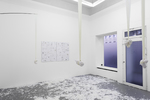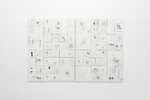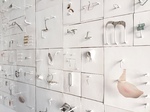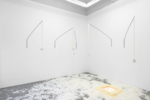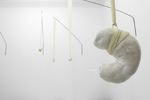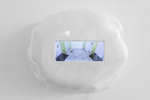Gothenburg, June 19, 2019
Dear Jessica,
I must confess that I haven’t seen much art lately. I’ve spent most of my time on the countryside, in a province called Bohuslän, in the northern part of the Swedish west coast. I’ve been writing and reading about soils, and trees, and I’ve collected plants. Every morning I’ve gone for a long walk in the forest that surrounds the house.
I always find new paths that make me know the forest a little better than I did the previous day. It takes time to get to know a forest, and I need to take many more walks before I can honestly say that I know this one.
Almost 70 percent of the land surface in Sweden is covered by forests. But because of the forest industry, most of them are very homogenous, dominated by spruce trees of the same age, just waiting to be cut down. Such a shame! They are tree plantations rather than forests. But not this one! This is a real forest. Solitary and wind beaten pine trees are scattered on the rocky hilltops. Between the hills, the vegetation is dense with birches, aspens, alders, rowans, oaks, Swedish whitebeams, old spruces and shrubs of buckthorn and willows of various kinds. And now the mushrooms are popping up – a couple of days ago I found chanterelles.
I think words are important when being in the forest. They improve our vision, and enable us to perceive differences that otherwise would have remained unnoticed. It is a wholly different thing to find black trumpets in the moss below a pine tree than it is to just see a couple of strange looking mushrooms.
I try to learn the name of at least one new plant species every day. This I do to cure myself from
plant-blindness. Plant-blindness makes us unable to notice individual plants, instead they just fade into the background, become part of an anonymous greenery. Plant-blindness is a global and very dangerous disease, since it is impossible to care for something that one doesn’t even see. It also damages imagination; it disenchants the world!
Do you think that plant-blindness also occurs in the art world (as art-blindness)?
I’m asking you this because you deal a lot with issues of perception and methods of exploring and understanding nature. Besides, many of your works strike me as more plant-like than object-like, more like organisms than artefacts. Thus, they belong to the laboratory rather than to the studio or the exhibition space, or rather, a laboratory that accidently has transformed into a biotope, inhabited by nameless emerging organisms. The scientists lost control of their study! Something that never has been seen before is noticed for the very first time. When entering your biotope, trying to see what you see, we are also faced with our own blindness.
My best,
Jens
Letter from Jens Soneryd to Jessica Leinen, ”you’ll do it yet, dear”. June 21–June 29, 2019. Åplus, Berlin.
Å+ Jessica Leinen Dossier.pdf
PDF-Dokument [17.9 MB]

